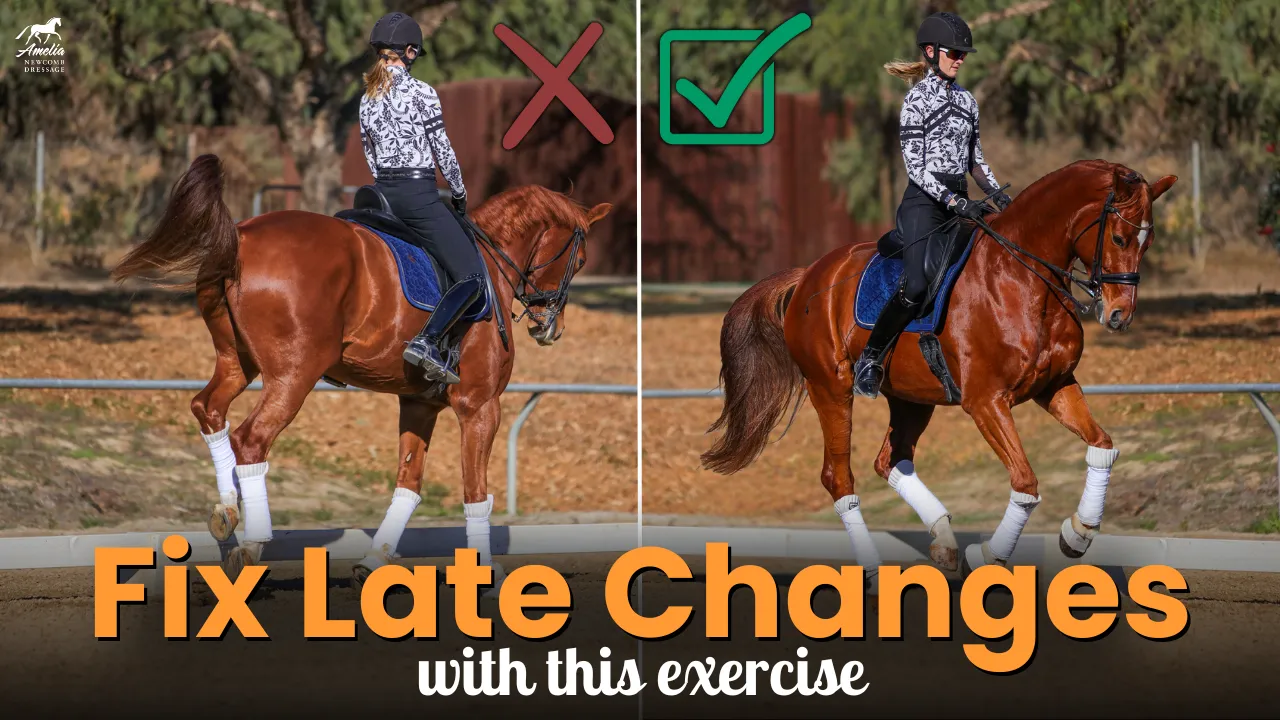In this blog post, we’ll break down an exercise focused on using your seat effectively to stay connected with your horse’s rhythm and maintain balance throughout your ride.
One of the most common misconceptions in riding is that you control the horse’s motion through your shoulders or reins. However, it’s your seat that truly dictates your connection and rhythm with the horse.
When your hips move freely and your lower back is relaxed, your shoulders can remain quiet and still. This separation between your upper and lower body creates a stable and effective seat, allowing your horse to stay balanced and responsive.
Imagine your hips acting as a pendulum, moving with the rhythm of your horse’s gait. Whether you’re pushing, following, or resisting, this motion should come from your seat—not your shoulders. When your hips are engaged and your shoulders remain still, you’ll notice a smoother, more balanced connection with your horse.
Avoiding Common Mistakes
One frequent error is trying to stay “still” by freezing your hips and compensating with excessive movement in the upper body. This disconnects you from the horse’s motion, creating a jarring ride that resembles a stone skipping across water. Instead, focus on allowing your hips to follow the horse’s movement, staying in harmony with their rhythm.
Why It Feels Like You’re Moving “Too Much”
Many riders feel like they’re moving excessively when they engage their hips properly. However, when you review the ride on video, you’ll see that your seat remains smoothly connected to the saddle. This feeling of motion is a sign that you’re in sync with your horse’s natural rhythm—not bouncing or disrupting their stride.
Mastering Transitions with Your Seat
Effective transitions, whether upward or downward, rely on subtle shifts in your seat and weight. To prepare for a downward transition, for example, engage your seat to shift your weight back and lightly adjust the reins for balance. The smoother your aids, the more balanced and seamless your transitions will become.
Follow the Horse’s Rhythm
Riding isn’t about staying rigid; it’s about blending your motion with your horse’s. By keeping your seat engaged and your hips free to follow the horse’s rhythm, you’ll create a more balanced and harmonious ride.
As you practice these techniques, remember that progress takes time. Focus on one thing at a time, and soon you’ll feel the difference in your connection with your horse.
Happy Riding!
Amelia












































